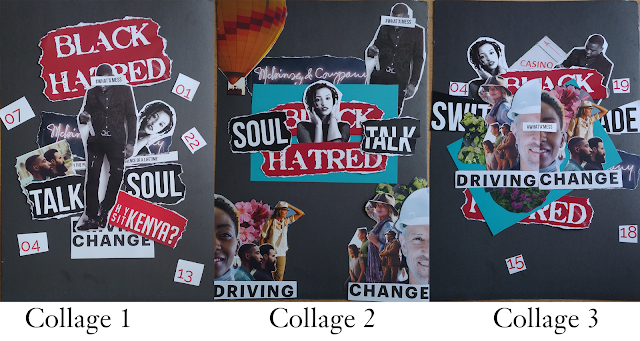FINAL PROJECT –VISUAL ANALYSIS
11/06/2023 - 07-07-2023 (Week 10 - Week 14)
Osezua Ehizogie Ejodame / 0351565
Design Principles/Bachelor of Computer Science (Honours)/Creative Media Design (Minor)/ School of Computer Science
FINAL PROJECT –VISUAL ANALYSIS
INSTRUCTIONS
2. written visual analysis
3. your design process:
3.1 visual references (designs that have inspired your own)
3.2 idea exploration and description
3.3 final outcome JPEG (A4 size) with a title and a rationale
3.4 feedback from the lecturer
3.5 reflection on Final Project.
1. A recap of Final Project brief
Visual Analysis involves understanding the visual elements of an artwork, such as color, line, texture, and scale. Its purpose is to recognize and comprehend the artist's visual choices. It helps develop critical interpretation skills and active thinking by examining the content and meaning of a design. It consists of processing such as:
1. Observation: Observing and describing visual elements
2. Analysis: Reflecting on how visual elements interact with one another
3. Interpretation: Determining the meaning of the design
2. Written visual analysis
My chosen UNSDG Goal is Goal 10: Reduced Inequalities, and my chosen design to analyze is a movie poster from the film Green Book (2018), which touched on topics of racial inequality in America during the 1960s through the experiences of the main characters, Tony, an Italian American, and Don, an African American.
 |
| Fig: Green Book (2018) - Posters — The Movie Database (TMDB) (themoviedb.org) |
Phase 1 Observation:
The poster is in portrait format, with the main colors being light blues from the sky, the car, and the driver's shirt. The landscape has a slightly blurred effect. The two main characters are clearly visible inside the car, which is the focus of the artwork. The person in the back is looking at the viewer, while the person in the driver's seat is looking back. At the bottom of the poster, the title of the film "GREEN BOOK" is displayed and in the top half of the composition their smaller pieces of text.
Phase 2 Analysis:
The placement of the type throughout the design is generally well balanced not taking away too much attention from the main visuals.
There is a repetition in the use of the blue color. There is a contrast between the blue car and the shirt color of the character in the back of the car.
The blue colors of the car and the sky are also well balanced as there's an equal amount of blue in the top half of the composition and the bottom half of the composition, these blue colors are separated by a white color in the middle. The overall use of colors in the design give a sense of unity.
Phase 3 Interpretation:
The car plays an important role in the film because the characters spend a lot of time on the road. The character in the front seat is named Tony and the character in the backseat is named Don. Tony drives Don to many destinations.
How this relates to goal 10 is the general plot of the movie and the racial discrimination the main characters face in that time period with Don being African American and Tony being Italian American. Not only that but the relationship the two main characters have as employer and employee grows into a deeper friendship as they face different challenges in the film. Despite that discrimination Don still had a talent for playing piano that could not be denied and Tony, despite his somewhat questionable actions was a really nice guy.
3. Design Process
3.1 visual references
 |
| Fig. Ref: Green Book - Official Trailer | IMDb |
 |
| Fig. Ref: Importance to Support Equality and Diversity in the Work Place (canadianequality.ca) |
 |
| Fig. Ref: Green Book Movie Controversy | POPSUGAR Entertainment |
 |
| Fig. Ref: Racial Equality Illustration Stock Illustration - Download Image Now - Racism, African Ethnicity, Concepts - iStock (istockphoto.com) |
 |
| Fig. Ref: (48) Pinterest |
3.2 idea exploration and description
 |
| Fig. Idea Sketch #1 and #2 |
 |
| Fig. Idea Sketch #3 |
 |
| Fig. First Digitization Attempt |
 |
| Fig. Second Digitization Attempt |
The second attempt shows three hills now instead of two. The podium is on the highest hill and the path they took from it is shown as they continue to walk together.
 |
| Fig. Third Digitization Attempt |
3.3 final outcome
 | |
|




Comments
Post a Comment